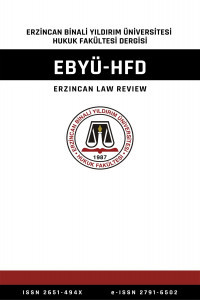PREFERRED PROTECTION ON POLITICAL SPEECH IN THE JURISPRUDENCE OF THE EUROPEAN COURT OF HUMAN RIGHTS
___
- Muller v. Switzerland, (App. 10737/84), 24 May 1988, Series A No 133, (1991) 13 EHRR 212.
- Handyside v United Kingdom, (App. 5493/72), 7 December 1976, Series A No 24, (1979-80) 1 EHRR 737.
- Leroy v France, (App. 36109/03), 2 October 2008.
- Otto-Preminger Institute v Australia, (App. 13470/87), 20 September 1994, Series A No 295-A, (1994) 19 EHRR 34.
- ISSN: 2651-494X
- Yayın Aralığı: 1
- Başlangıç: 2002
- Yayıncı: Erzincan Üniversitesi Hukuk Fakültesi Dekanlığı
LİMİTED ŞİRKET VE ORTAĞI KOMANDİT ŞİRKET (GMBH & CO. K G)
İFLASIN ERTELENMESİNİN FİNANSAL KİRALAMA (LEASİNG) SÖZLEŞMESİNİN SONA ERMESİNE ETKİLERİ
ALMAN VE İSVİÇRE HUKUKUNDA ŞİRKETLER TOPLULUĞUNDA TEK ELDEN YÖNETİM KAVRAMI
BELEDİYE HİZMETLERİNİN YERİNE GETİRİLMESİNDE ÖNCELİK SIRASI SORUNU
TÜRKİYE’DE YASAMA ORGANININ YÜRÜTME ORGANINI SİYASİ DENETİMİ
İŞYERİNİN VEYA BİR BÖLÜMÜNÜN DEVRİ, SONUÇLARI VE DİĞER ÜÇLÜ İŞ İLİŞKİLERİYLE KARŞILAŞTIRILMASI
OSMANLI TAŞRASINDA SUÇ VE SUÇLULAR (1919 OCAK AYI ERZİNCAN SANCAĞI ÖRNEĞİ)
İDARENİN TAKDİR YETKİSİNİN TÜRK VERGİ HUKUKU AÇISINDAN DEĞERLENDİRİLMESİ
TÜRK VERGİ HUKUKUNDA VERGİ KABAHATLERİNDE VE SUÇLARINDA İÇTİMA
